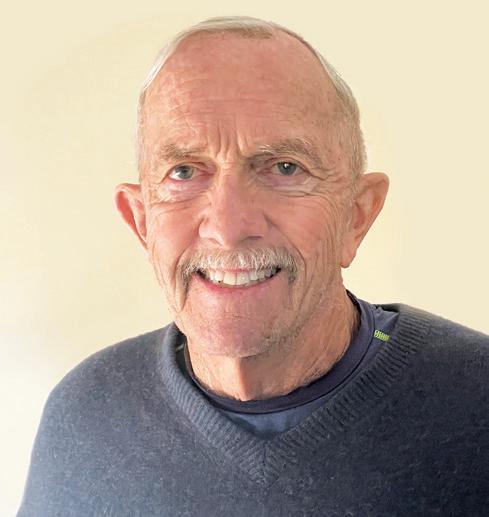
3 minute read
Firewise by Ed Brown
TGO FIREWISE INFORMATION
RESIDENTS REDUCING WILDFIRE RISKS Visit tgocsa.org to view Firewise video and brochure or TGO Firewise on Facebook
Remember, you must have written permission to remove any living shrubs or trees beyond your property line. Contact CSA if you have questions about removal and consult the Architectural Review Board before making landscape changes.
Climate Awareness and Protecting Your Home by Ed Brown
If you were aware of the TV news these past several months, then you know that many things have changed. One of those changes was the landscape: California, Oregon, Washington and Idaho. Wildfires have been ravaging those states for months. Three million acres in California were turned to gray ash. In parts of the other three states, two million acres became a burned out wasteland. In California 700 structures were destroyed, hundreds of vehicles were burned, residents of dozens of communities were burned, livestock and pets were destroyed, 37 firefighters were killed and the carnage continues. As long as the fuel (fire load) is great, humidity is low and the strong, hard, dry Santa Ana winds blow through the canyons, the fires will continue to feed. Most are not anywhere near “under control.” The smoke in those states represents a hazmat situation drifting across the country and even as far away as Europe. Environmental destruction (floods and landslides) and health concerns resulting from prolonged smoke inhalation will last a lifetime! My, aren’t you glad you have a place of refuge here in TGO, south of those nasty, smoke-burdened continental winds and free of wildfires?... What? Well almost!
The Jet Stream usually doesn’t swing far enough south to pick up West Coast smoke but, as you know, we do have wildfires. Our wildfires are not as intense as those burning out West. We don’t have ridge lines, Santa Ana winds, or as much ground fuel and dry conditions as California wildfires. During dry winter months with strong seasonal winds it is possible for our river plains to get ignited and take off into the upland habitat (pines, hardwoods and homes) which is TGO. The damage might not be in the billions of dollars but what is the value, to you, of your Park Home, Motor Home or 5th Wheel? How can you protect your home? If you don’t know, read about “How To” in a future issue of The Happenings.
In the meantime, you can jump-start the home protection process if you remember these three words: LEAN, CLEAN, AND GREEN. LEAN refers to the thickness of the vegetation outside your home. Thirty feet is the minimum distance from the outside walls to “the jungle.” The idea is to discourage fire from spreading to your living spaces. CLEAN is a reminder to keep this same area clear of vegetative waste (fallen leaves, dead palm fronds, pine cones, pine needles; stuff that can be ignited by fire embers blowing in a fire-generated wind!) It includes your roof and gutters! GREEN is the color of your lawn if it’s hydrated. If it is brown or tan, it will burn (right up to the house). Get the picture? You may have a sprinkler problem or an insect problem. Either way, the CSA office can help you to hydrate your lawn.
BE AWARE: PROTECT YOUR HOME! Riddle Answer: A deck of cards
Firewise Committee - Contact Information
Tim Graham Chairman 561-262-8833 Donald Payne 407-222-0583 Ed Brown 321-383-8253 Mike Lavery 585-472-1538 Ron Peoples 407-509-0486 Betty Salter 321-223-8073 Ed Olefirowicz 919-360-3174 Karri Olefirowicz 919-265-4315 Christopher Miller 407-375-8310 O.M. Butch Jones 804-514-4458 Albert McGuire 810 338 5646 Sharon Maloney 770-294-6362










